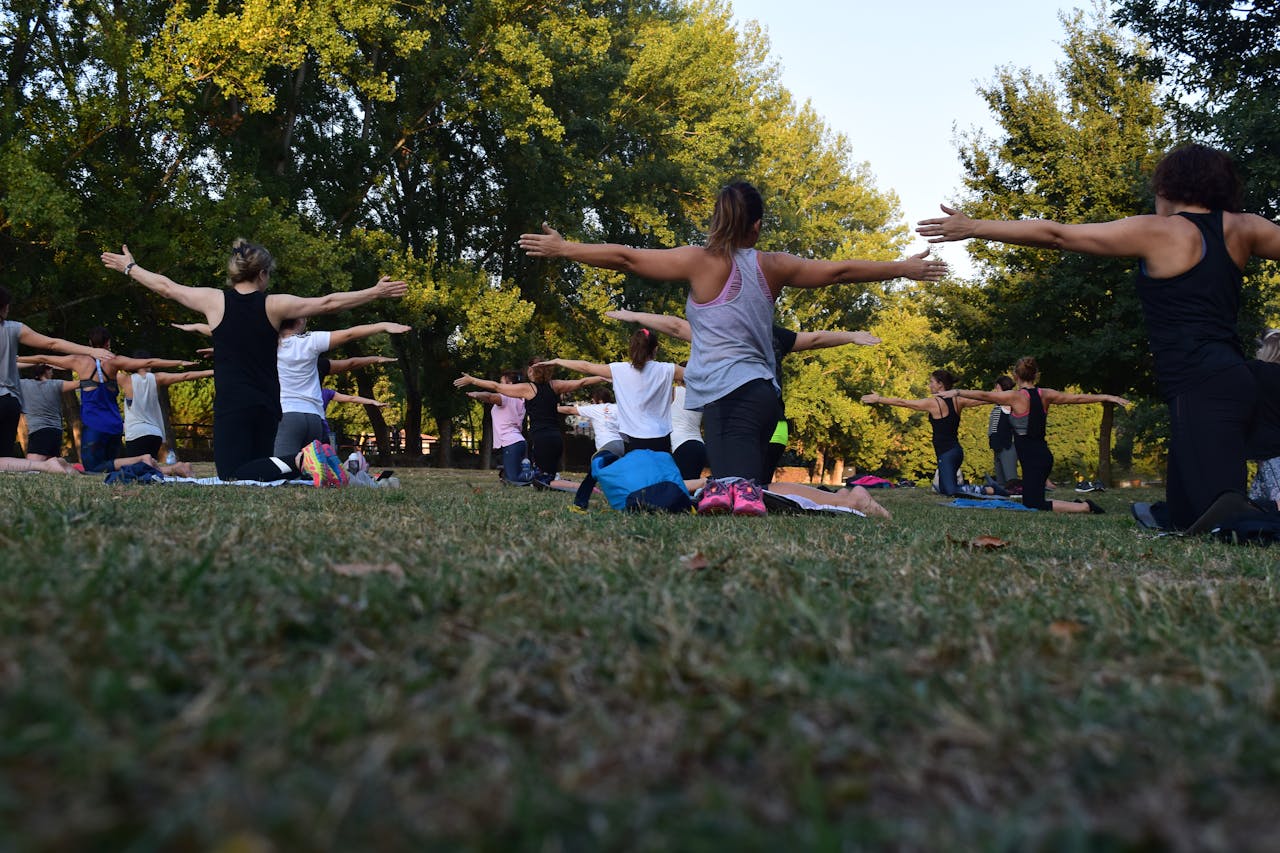
Table of Contents
When getting into yoga or thinking about getting into it, one question you might choose to ask yourself is why? Knowing why you want to get into yoga can help you determine the type of yoga you want to practice.
Why get into doing yoga?
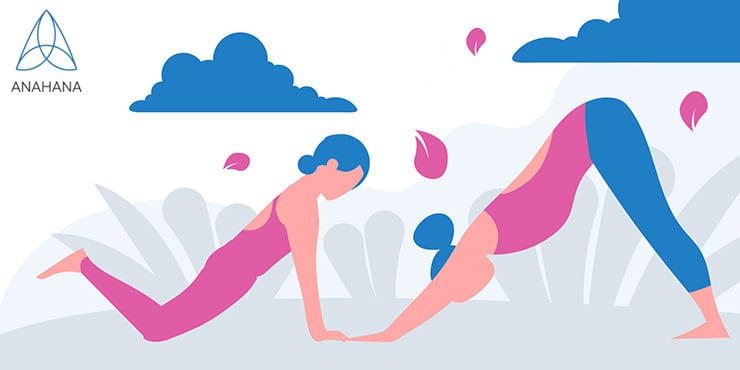 You might think that you want to practice yoga to get stronger or more flexible. Or you want to reduce, eliminate or prevent pain. Or you want to keep your body healthy or get your body healthy in the first place. Maybe you want to loosen tight muscles. Or you want to improve your ability (and maintain it) in a particular activity, pastime or sport.
You might think that you want to practice yoga to get stronger or more flexible. Or you want to reduce, eliminate or prevent pain. Or you want to keep your body healthy or get your body healthy in the first place. Maybe you want to loosen tight muscles. Or you want to improve your ability (and maintain it) in a particular activity, pastime or sport.
As to styles of yoga, there are styles with pre-arranged sequences of poses, which for some people can be attractive because once you’ve learned the sequence, you can get on with practicing it, improving physical health through that practice.
There are styles where you hold poses for shorter periods and other styles of yoga where you hold them for longer.
Some styles may be conducive to developing strength, like a yoga workout. Other styles can help you develop flexibility while others develop a calmer, more relaxed state of mind. In addition, some teachers teach a more basic yoga that has no style, which gets you more in touch with your body.
You may have already read about a particular type or style of yoga and found it attractive.
Or maybe the idea of doing yoga exercises feels right. So what might be stopping you?
Some Roadblocks to Getting into Yoga
There may be some roadblocks to beginning a yoga practice. Those can include a lack of a yoga studio or yoga classes, particularly yoga for beginners classes in your neighborhood. They may also lack time, space, or even equipment. And it may include the idea that you don’t know how to get into yoga or that it’s even a possibility for you.
Some potential beginner students think that they need to be flexible to practice yoga or that they have to be skinny or fit. None of this is true.
Almost anyone can learn yoga.
You don’t even need a yoga mat to practice yoga. To begin your yoga journey, all you need is, at the minimum, room to stand or sit. Even if time and opportunity are limited, you can do yoga for beginners at your desk.
Some Basic Props You May find Helpful for Doing Yoga At Home
If practicing yoga at home, it can be helpful to have equipment like yoga straps and blocks plus cushioning for knees, feet, or elbows. If you don’t have yoga blocks, you can always use a chair or even a coffee table.
Here’s a bit more of a breakdown of what you may need when doing yoga for beginners.
Yoga blocks can be a convenient tool and are reasonably inexpensive. If you are limited budget-wise or don’t want to spend a lot of money, a pair of yoga blocks are a worthwhile investment, especially if you have difficulty bending forwards. In some cases, even a single yoga block can be handy.
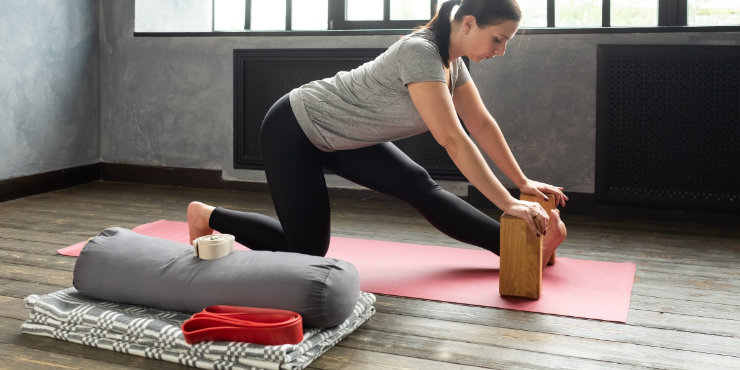
The nice thing about yoga blocks is that you can hold them in your hands, making getting into some forward bending or balancing poses easier.
Yoga straps, a belt, or a towel can be handy if you can’t touch your feet with your knees straight. You can wrap the belt or strap around your foot and grab onto the ends with one or both hands to extend your reach. Even if you can reach your feet, using a belt or strap can be preferable because it can give you more space in the pose, especially when first getting into a pose.
If you haven’t got a belt or strap, but do have a yoga mat, then in some cases, you can use your mat as a make-do strap.
Yoga mats can be helpful when you need a non-slip surface, and to that end, if you are getting one, make sure that it remains non-slippery, especially when you get sweaty.
For more on the care of yoga mats, if you choose to get one, check out how to clean your yoga mat.
Another simple yoga prop that can be very helpful is a wall, particularly if you want to do yoga to relax and release stress or if your flexibility is limited.
For example, a simple yoga for beginners pose that you can use to relax is to rest on your back, with your legs up the wall. Ideally, your butt is against the wall, but if your hamstring flexibility is limited, you can do this pose with your butt away from the wall.
If you have hamstring flexibility and are doing seated poses that involve bending forwards, then another way that you can use a wall is to sit with your back against the wall and then use your hands to help push you into the forward bend.
What is yoga?
So what exactly is yoga?
While it is more than just yoga poses and breathing exercises, a simple way to think about yoga is as a state of mind.
When doing yoga for beginners, the idea isn’t just to make the shape of the pose with your body but to notice your body as you do the pose. And even if you can’t do the pose “perfectly,” the idea then is to be aware of your body as you work towards your best approximation of that pose.
Noticing your body can include:
-
Focusing on the sensations generated by your respiratory muscles as you breathe.
-
Noticing and controlling the flow of breath as it passes through your nasal cavities and throat.
-
Being aware of the pressure gradient at contact points with the ground and other points of contact.
-
Noting the sensations (and changes in sensation) generated by activated muscles and tensioned connective tissue.
Going even deeper, yoga for beginners can involve noticing your thoughts and either directing them or turning them off.
All of this can seem daunting but can be reasonably easy to learn if you focus on learning gradually.
Going to Class or Developing a Self Practice
One question that you can ask yourself when getting into yoga for beginners is: do you want to take classes continually, or do you want to develop your own practice?
When taking classes, the advantage is that you do not have to think about what pose comes next. Your yoga instructor tells you.
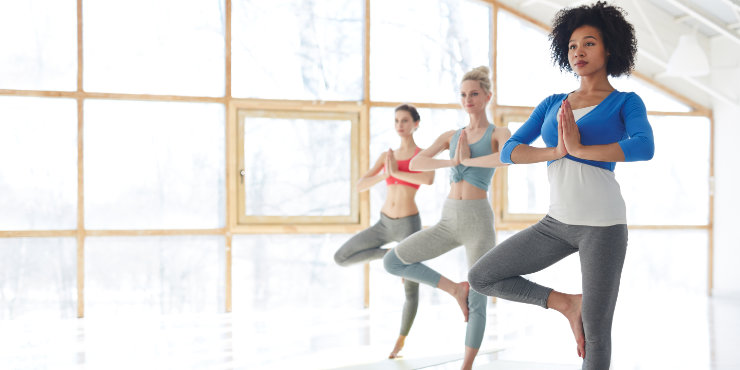
Some classes may involve the same poses, while others have different poses or routines each time.
Some classes are simply enjoyable and leave you feeling good.
There are some disadvantages.
-
Yoga classes, even for beginners, do tend to cost money.
-
In addition, class time and availability may be limited.
-
And you may have to take into account travel time and distance.
If developing your own self-practice, you have the advantage that you can choose the time of your practice.
In addition, you can develop a practice based on the requirements of your own mind and body.
Some pitfalls of a self-practice are:
-
You may habitually do easier poses.
-
You may also tend to skip harder poses, some of which might benefit your body.
-
Another challenge with developing a self-practice is that it requires more self-discipline.
Note that when first starting yoga, you might take some yoga classes at a yoga studio or even your gym and then start practicing at home. You might also develop a self-practice by watching videos, reading books, or taking online yoga classes or courses.
When you start doing yoga, it can be a good idea to be aware of the different styles of yoga.
Ashtanga Yoga for Beginners
Because it involves a set sequence of postures, one practice that lends itself well to learning from a book is Ashtanga yoga's primary series.
Doing the whole primary series can take from 90 minutes to two hours. But, you can work towards the entire series gradually.
Self Practice in a Class Setting
If you like the idea of doing your own Ashtanga practice but also like the idea of doing it with other people, Mysore-style classes are classes where you practice at your own pace. A teacher will be there to teach you the poses and adjust you.
Other studios may have open practices, again where a teacher is present to offer help or advice but where you can practice whatever style of yoga you choose in the company of others.
Power Yoga
One very popular style of yoga is Power yoga. This type of yoga is similar to Ashtanga in that it often starts with sun salutations. It also uses many of the same poses. However, in power yoga, there is no set sequence. If you don’t like doing the same thing over and over again, then you might like power yoga.
Restorative Yoga for Beginners
If one of the reasons you want to get into yoga is to relax, or if you are feeling worn out, you might benefit from a restorative yoga class. This practice won’t generally give you the experience necessary for other more active styles of yoga. Still, it does make it very easy to relax. You may find you fall asleep in the supported poses used in this type of yoga.
Improving Flexibility with Yin Yoga
Another style of yoga that may be approachable for beginners is yin yoga, particular if you can find a yin yoga class for beginners. This practice can be a good way to develop body awareness. It can also improve flexibility.
Types of beginners that this practice is not suitable for are those that are hyper-flexible.
This practice involves holding poses for up to five minutes while focusing on relaxing stretched muscles. A beginner's class will ideally focus on shorter holds and less difficult poses (so definitely not a pose called saddle pose) and allow you to work gradually towards longer holds and more challenging poses.
Things to Look out for When Getting into Yoga
Doing Yoga Because it Looks Cool
Some people get into yoga because some of the poses look cool. While there is nothing wrong with this, it can be hard to maintain a practice if the only reason is to look cool. The novelty can wear off. You can develop a more lasting yoga practice if your focus becomes one of sinking your awareness into your body while doing yoga poses.
There can be a marked difference in appearance when someone is doing a yoga pose just for its look versus someone fully engaged in the pose, at whatever level they are doing the pose.
Working around physical limitations
Whether as a beginner you plan to experiment at home, using a book or youtube videos, or you plan to attend classes (either online or in-person), a good thing to be aware of is any physical limitations. You may discover these in the process of trying yoga, or you may already be aware of them. And this may be one reason for getting into yoga, to overcome these limitations.
When approaching new yoga poses, whether practicing by yourself or in a yoga for beginners class, it can be a good idea to first think about how you will get out of a particular position. Will you be able to do it easily without help? If not, do you have any tools or props to help you get out of a pose without hurting yourself in the process? The same goes for moving into some positions. Can you move into them safely and in control?
Failing Safely
While some balance poses are not suitable for beginners or people doing yoga for the first time, it can still be a good practice to learn how to fail safely.
For example, if you are going to do a balance pose, one that you might fall out of, look around you and make sure that you can fall safely and won’t crash into anything or anyone if you fall.
The Dangers Of Heat
Some styles of yoga use a heated room, Bikram Yoga and Hot yoga, for example. Other types of yoga generate heat as you practice. Ashtanga yoga, power yoga, and vinyasa or flow yoga fit into this category. One thing to be aware of with heat is that it can make it very easy to push into poses and cause injury. And, you might not realize until after your practice that you’ve injured a joint.
One way to approach a practice that involves poses that can endanger joints if not done mindfully is to try these poses while cold to get a better feel for how they affect your joints and what you should do to keep them protected.
Poses that Beginners Should Avoid or Approach very Carefully
Some yoga poses that you, as a beginner, should avoid or approach carefully include lotus pose and variations of poses that involve lotus. As well, virasana, janusirsasana C, and marichyasana style poses with a lotus element.
This isn’t to say that you shouldn’t attempt these poses. Instead, work towards them gradually and, where possible, avoid the mindset of wanting to get the pose.
A healthy approach to doing yoga and one that is more rewarding is enjoying the process of working towards a pose. Taking this approach, you are more likely to continue to practice the pose when you do finally get it because even then, it’s not so much about the appearance of the pose but the experience of your body while you are in it.
Other poses for beginners to avoid include headstand, shoulder stand, and plow pose.
Suitable Beginner Poses
If you are a complete beginner in the yoga space, there is a wide variety of easy yoga poses that you could try. These include Plank pose, downward facing dog, child’s pose, mountain pose, cobra pose, triangle pose, warrior ii, bridge pose, and tree pose.
There are of course more advanced poses but these should be done in the presence of a yoga teacher, to reduce the risk of injury.
Breathing Techniques for Beginners
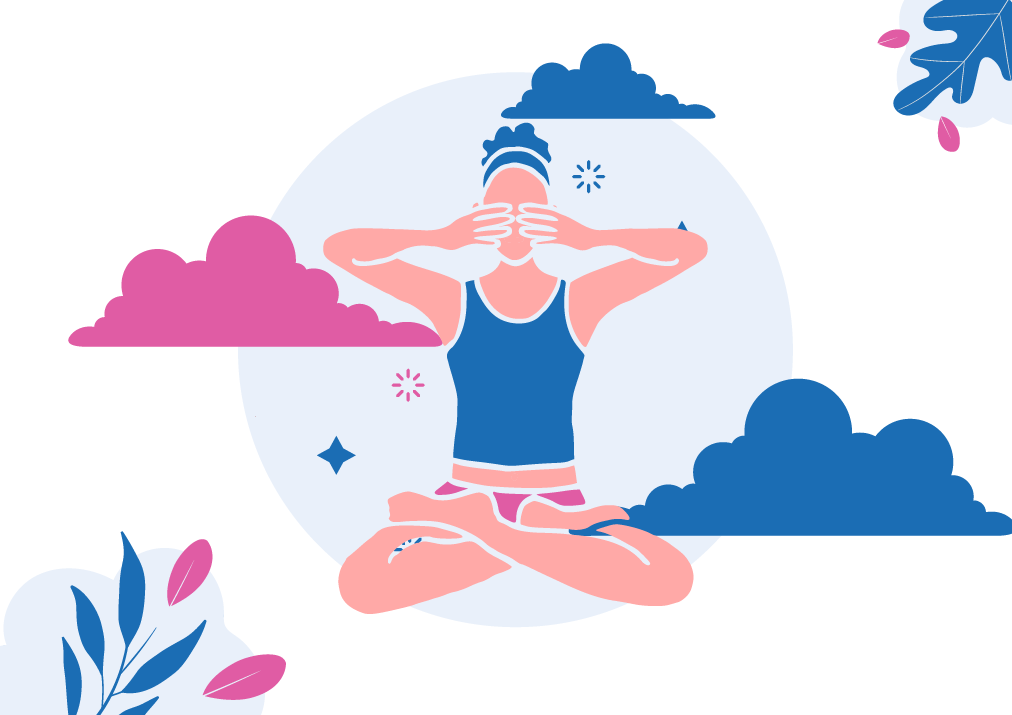 When beginning yoga, it can be helpful to have some ideas on how to breathe easily. The most basic breathing instruction is to breathe through both nostrils. When doing so, try to keep your mouth closed and keep the tip of your tongue pressed against the roof of your mouth, just behind your front teeth.
When beginning yoga, it can be helpful to have some ideas on how to breathe easily. The most basic breathing instruction is to breathe through both nostrils. When doing so, try to keep your mouth closed and keep the tip of your tongue pressed against the roof of your mouth, just behind your front teeth.
If you find nostril breathing difficult, work towards it gradually. Try nostril breathing for three breaths and then rest with two mouth breaths. Gradually decrease the number of mouth breaths while increasing the number of nostril breaths until you can breathe comfortably through your nostrils.
Use nostril breathing for the breathing techniques that follow.
Basic Spinal Breathing
This breathing technique involves alternately bending the spine forwards and backward to generate inhales and exhales. It can be a simple and effective way to control breathing. Rather than trying to control your inhales and exhales directly, you control them indirectly via smooth and repeated movements.
While sitting or standing upright, bend your spine backward to lift your chest and lengthen your belly. Then bend your spine forward so that your chest sinks down. Do both actions slowly and smoothly. You should find that bending the spine back naturally causes an inhale, while bending it forwards creates an exhale.
Pay attention to how the quality of your movements affects the quality of your breathing. So rather than suddenly lifting your chest and then suddenly lowering it, try to do both actions slowly and smoothly with a pause between each.
Costal Breathing
With enough experience of belly breathing with an exhale focus, you might also find costal breathing an enjoyable exercise.
The lower belly is the part of the belly from your pubic bone to about two fingers widths about your belly button. The upper belly is the remaining part of your belly up to the bottom arch of your ribcage.
To begin with, draw your lower belly inwards. Keep it pulled in and inhale into your upper belly and front ribs. Relax your belly and your ribs to exhale. Repeat this a few times.
You can turn this into a three-step exercise. First, pull your lower belly in to exhale. Then expand your upper belly and allow your chest to lift to inhale. Relax your belly and your ribcage together to exhale.
An option is to inhale and exhale while keeping your lower belly pulled in. In this case, all that moves is your upper belly and your front ribs.
As with the previous breathing exercise, you can add exhale-retentions, pausing at the end of each exhale. You can also experiment with inhale-retentions, pausing at the end of each inhale.
Basic Belly Breathing with a Focus on the Exhales
Another breathing method is to breathe into your belly, focusing on active exhales and relaxed inhales. You can do it while standing or sitting.
Draw your belly inwards towards your spine to cause an exhale. Then allow your belly to expand so that you inhale.
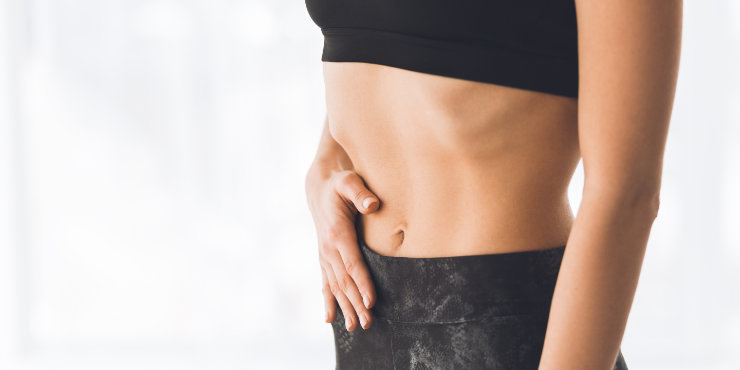
Note that for each exhale, attempt to pull your belly inwards past the border of your ribcage and pelvis. For your inhales, you may find that all you need to do is relax your belly, and the inhale will occur naturally.
Once you get a feel for these actions, work to slowly and smoothly draw your belly inwards and slowly and smoothly release.
For both actions, you can allow your chest to move when you first learn this exercise. Then, as an option, work at keeping your chest still.
As you get more used to this exercise, you can also add a slight pause at the end of each exhale. If you find these exhale retentions enjoyable, work at slowly lengthening the duration of your exhale retentions.
A note on breathing exercise duration
For any of the above breathing exercises, the duration can depend on how much time you have and how effective the exercises are.
As a general guideline, practice breathing exercises for 1 to 5 minutes.
If you are short on time, you can stop as soon as you feel present, grounded, or calm.
The nice thing about breathing exercises is that you can practice them anywhere and anytime.
Benefits Of Yoga For Beginners
-
Breathe better - Many yoga styles will help you improve your breathing.
-
Easy to get started - This is an important and underrated part of yoga. You need almost no equipment, and you can do it just about anywhere!
-
Flexibility - Yoga can be used to help to improve flexibility, but it is not a guarantee. Look at passive and active stretching so that you can work towards better flexibility while practicing yoga poses.
-
Strength - Many styles of yoga can help to strengthen the body. This can be through the deliberate activation of muscles. It can also be through the mindful movement between poses. And it can be from poses that force muscles to activate in order to maintain the body’s position.
-
Improve control and stability - depending on the teacher and their understanding of the body, yoga can help to improve your ability to control and stabilize different parts of your body. This can be key to improving your ability to apply strength effectively as well as improve flexibility.
-
Injury prevention - Better flexibility, strength, stability, and balance can help prevent injuries as you age. Just as important is body awareness. All of this can be gained from the right type of yoga practice.
-
Help with chronic pain - Regular yoga practice over time can help with chronic back, neck, shoulder, and knee pain. This can be achieved through better muscle function and balance, leading to happier joints and muscles.
-
Reduce stress - Focusing on your movement and breath has meditative benefits and is scientifically proven to help reduce stress. Yoga is a great way to practice this sort of focus.
-
Sleep better - If you are not as stressed and your body is holding less tension, you will sleep better! One key to reducing stress is stilling your mind. The better you get at focusing on movement, breath, and eventually physical stillness, the easier it can be to still your mind.
-
Improve overall well-being - The sum total of the above benefits is that a regular yoga practice can positively affect your overall well-being. It can alter your state of mind and improve how your mind and body feel.
Resources
Yoga for Everyone: A Beginner's Guide - Well Guides - The New York Times
10 Easy Yoga Poses for Beginners to Build Strength, Flexibility, and Mental Clarity
Yoga for Beginners: The Ultimate Guide to Starting Your Practice
Yoga For Beginners: Poses and Benefits – Forbes Health
Disclaimer
The contents of this article are provided for informational purposes only and are not intended to substitute for professional medical advice, diagnosis, or treatment. It is always recommended to consult with a qualified healthcare provider before making any health-related changes or if you have any questions or concerns about your health. Anahana is not liable for any errors, omissions, or consequences that may occur from using the information provided.

By: Anahana
The Anahana team of researchers, writers, topic experts, and computer scientists come together worldwide to create educational and practical wellbeing articles, courses, and technology. Experienced professionals in mental and physical health, meditation, yoga, pilates, and many other fields collaborate to make complex topics easy to understand.
